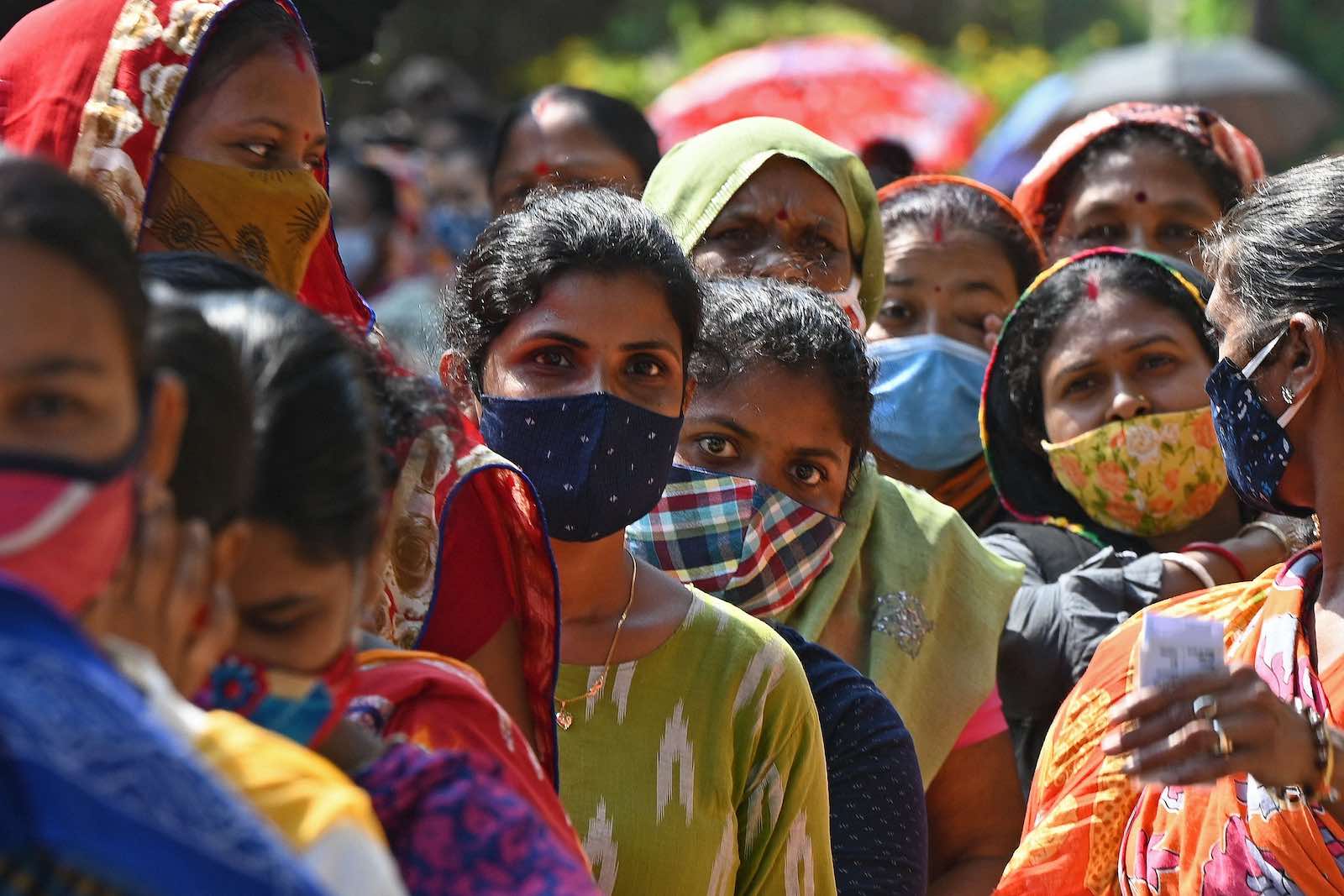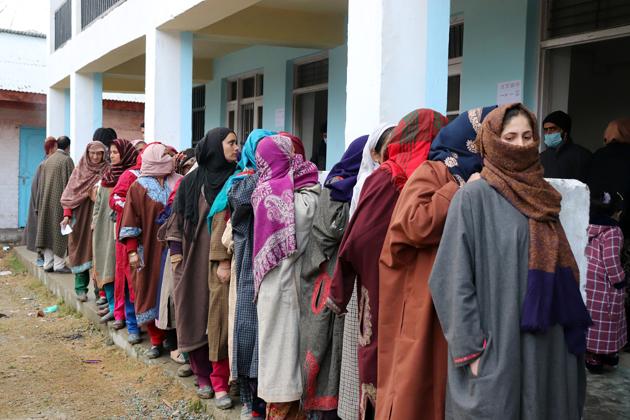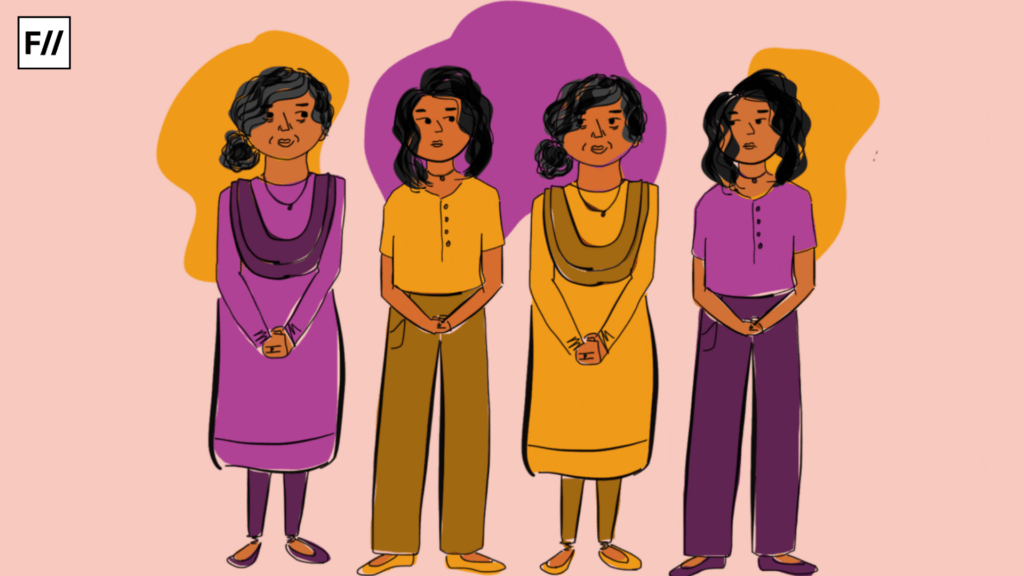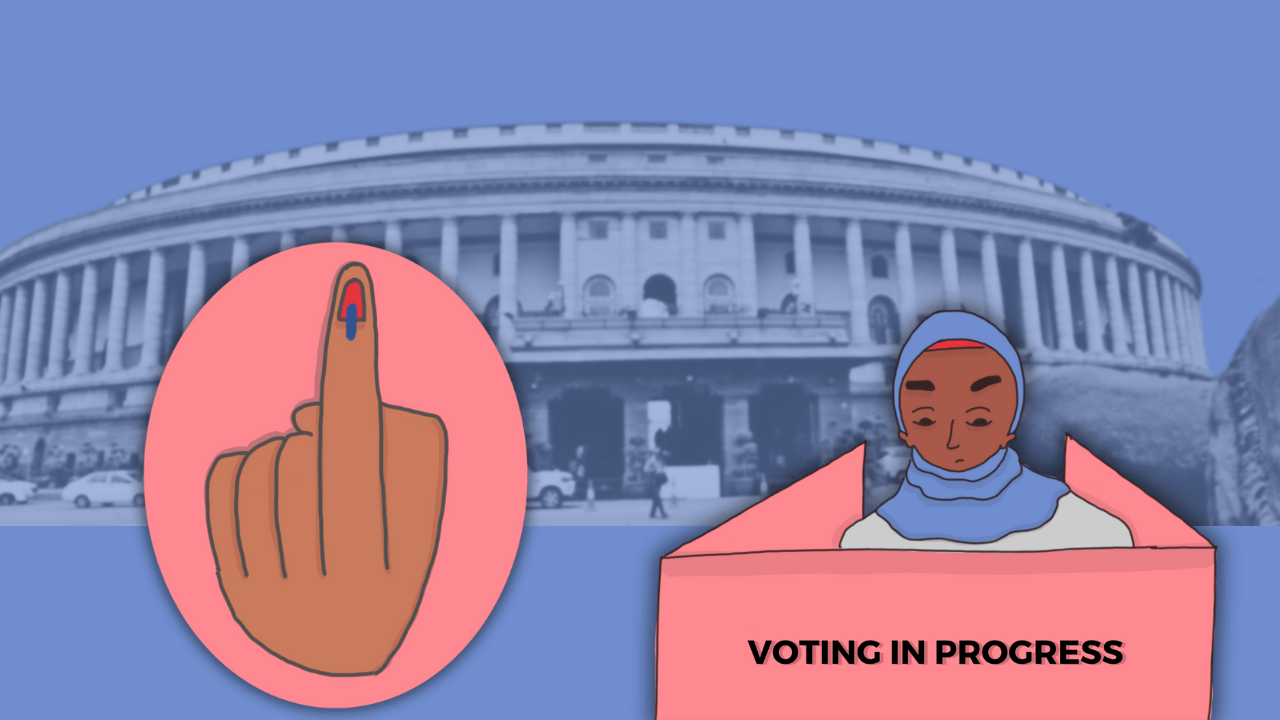In a significant milestone for India’s democratic process, the 2024 Lok Sabha elections witnessed an unprecedented surge in women voters, with their turnout surpassing that of men in 137 constituencies. This historic trend marks a notable shift in the electoral landscape, highlighting women’s growing political engagement and influence in the country.
In a significant milestone for India’s democratic process, the 2024 Lok Sabha elections witnessed an unprecedented surge in women voters, with their turnout surpassing that of men in 137 constituencies.
The fifth phase of polling on May 20, 2024, was particularly remarkable. Data released by the Election Commission revealed that 63% of women voters participated in this phase, compared to 61.48% of men. This phase included 49 constituencies across eight states and Union territories, with a total voter turnout of 62.2%, an increase from 61.82% in the 2019 elections.
The self-empowerment hypothesis suggests that rising literacy and media exposure have empowered female voters to exercise their political agency
Several states stood out for their higher female voter turnout. In 14 constituencies in Uttar Pradesh, 58.51% of women voted compared to 57.60% of men. Key areas such as Amethi and Raebareli saw a significant lead in women voters. In Amethi, 57.75% of women voted against 51.26% of men. The trend was even more pronounced in Bihar, with 61.58% of women voting compared to 52.42% of men. Madhubani constituency saw only 46.66% male turnout versus 60.08% female turnout.
Jharkhand and Odisha, both states reported higher women voter turnout in the two phases of polling since May 13, underscoring the broader pattern of increased female participation. While the overall trend showed a rise in women’s turnout, West Bengal presented a contrasting picture in the fifth phase, where the percentage of female voters slightly dipped compared to men. Nonetheless, this did not overshadow the larger trend of increased female voter participation seen in most constituencies across the country.
The surge in female voter turnout in India stems from a mix of factors. The self-empowerment hypothesis suggests that rising literacy and media exposure have empowered women to exercise their political agency. Institutional efforts by the Election Commission of India (ECI) have also played a significant role. Despite these strides, women remain underrepresented on electoral rolls, reflecting gaps in voter registration. While male migration may skew the voter sex ratio in favour of women in some areas, the overall increase in female turnout likely results from a combination of improved literacy, media exposure, and institutional initiatives.
The rise in female voters has not gone unnoticed by political parties and leaders
The Election Commission of India (ECI) recognised the gender gap in electoral participation after the 2009 national elections and launched the Systematic Voters’ Education & Electoral Participation (SVEEP) program to address it. Through targeted interventions, including women-specific campaigns and cultural initiatives, the program aimed to eliminate barriers to women’s registration and voting. Strategies such as women-led rallies and campaigns in tribal districts and initiatives targeting young married women yielded significant results, with the 2014 Lok Sabha elections witnessing a substantial increase in female turnout, narrowing the gender gap.
Despite these gains, efforts to achieve complete gender parity in electoral participation continue, with ongoing initiatives focusing on reaching out to future voters and fostering enlightened democratic engagement. Through sustained engagement and empowerment, the ECI endeavors to ensure equal participation of women in shaping the nation’s democratic processes.
Prime Minister Narendra Modi, like other political leaders, have increasingly focused their campaigns on women, addressing female-only gatherings and promoting schemes beneficial to women.
The rise in women voters has not gone unnoticed by political parties and leaders. Prime Minister Narendra Modi, like other political leaders, have increasingly focused their campaigns on women, addressing female-only gatherings and promoting schemes beneficial to women. West Bengal Chief Minister Mamata Banerjee and Odisha Chief Minister Naveen Patnaik have similarly highlighted their pro-women initiatives, emphasising the role of women in governance. In Delhi, Chief Minister Arvind Kejriwal has promised a monthly honorarium for women, reflecting the broader trend of political promises targeting female voters.

The Congress party has also pledged substantial financial support to women from poor households, further indicating the critical role women voters play in this election. A psychology-major and first-time voter Sreetama Das echoed the cynicism about the government’s gender-based policies, ‘I think all parties mostly use women’s rights as an instrument to get more votes but there is not much work done as far as actual implementation of those policies is concerned.’
The legacy of passive decision-making underscores the need for continued efforts to educate and engage women politically
Despite the historic increase in women voter turnout, questions remain about the true extent of women’s autonomous voice in the democratic system. Ayushi Motiwalla shared her observations this year from Mumbai North-West. She witnessed a decidedly large number of women at the polling booth. ‘The conversations they were having, there seemed to be a conflict between being updated about voting rights… not very politically aware, and their stringent idea that every vote counts.’ Without political education and an estimation of women’s rights and leverage within the system, this number indicates a dutiful citizenship of women, who understands the significance of the day and obeys to the demand of the system – albeit with charming celebration.
While more women are participating in elections, this does not necessarily translate to parity in decision-making roles within the government. Societal norms and entrenched gender biases continue to limit women’s representation in political leadership and executive positions. Furthermore, cultural and structural barriers often prevent women from engaging in public political debates and discourse. These barriers include limited access to resources, social stigma against women in politics, and a lack of supportive networks. Thus, while the increased turnout is a positive indicator of women’s growing political engagement, significant challenges still need to be addressed to achieve genuine gender parity in political influence and representation.
Women who have traditionally been passive decision-makers within their households often face unique challenges in asserting their political autonomy.
Women who have traditionally been passive decision-makers within their households often face unique challenges in asserting their political autonomy. In many cases, these women may be more susceptible to external influences, including the political preferences of their family members, community leaders, or local political figures. This susceptibility can sometimes result in their votes being swayed by the dominant voices within their households or communities, rather than reflecting their independent choices and interests.

However, increased political awareness and educational initiatives are gradually empowering more women to make informed and autonomous decisions at the ballot box. Despite this progress, the legacy of passive decision-making underscores the need for continued efforts to educate and engage women politically, enabling them to exercise their voting rights confidently and independently. Nilofer Sen, a writer and editor from Kolkata puts across a counter-point to that, ‘Women, thanks to a patriarchal social system, have found ways of getting their job done.’
She extended this personal observation and deduction that women might be nodding their heads to the familial discussions but in the privacy of the polling booth many continue to assert their individuality, and that is where they are taking control. This has been an observed coping strategy that a lot of Indian households continue to witness. Nilofer shared, ‘Not only in the realm of politics, I have had conversations where women have said – let the man think it’s his decision.’
The entrenched patriarchal norms that perpetuate these injustices highlight the necessity for women to participate actively in the electoral process.
Sreetama reflected on the gap between the numbers and their significance, ‘The rise in voter turn out is definitely a positive thing but for it actually make a difference, there is need for more education and awareness regarding the existing political parties and their agendas.’ Amidst this evolving political landscape, the prevalence of gender-based violence, significant gender gaps in various sectors, pay disparity, and ongoing issues within the patriarchal framework of society underscore the critical need for women voters to assert their voices more than ever before.
Despite legal advancements and policy measures, women in India continue to face substantial barriers to equality and justice. Gender-based violence remains a pervasive issue, and economic inequities such as pay disparity and limited career advancement opportunities hinder women’s progress. The entrenched patriarchal norms that perpetuate these injustices highlight the necessity for women to participate actively in the electoral process. By doing so, they can advocate for policies and leaders that address these systemic issues, promoting a more equitable and inclusive society.
‘I feel like there has definitely been a rise in involvement of women in political discourse over the years but it’s mostly only a certain segment of women with prior access to certain privileges. Somehow, the voice of the vulnerable and less privileged still remains suppressed.’
Sreetama Das, Psychology major
Sreetama also added, ‘I feel like there has definitely been a rise in involvement of women in political discourse over the years but it’s mostly only a certain segment of women with prior access to certain privileges. Somehow, the voice of the vulnerable and less privileged still remains suppressed.’

The 2024 Lok Sabha elections mark a significant shift in India’s electoral dynamics, with female voters outnumbering men in a substantial number of constituencies. This trend indicates s a deeper engagement of women in the democratic process and underscores their growing influence in shaping the country’s political future. As political parties adapt to this change, the focus on women’s issues and empowerment is likely to become an integral part of India’s electoral strategy, heralding a new era of gender-inclusive politics.
However, addressing the underlying challenges that prevent female voters from fully exercising their political autonomy and achieving parity in decision-making roles remains crucial for sustaining this progress. In a country where gender-based violence, economic disparities, and patriarchal norms persist, the empowered voice of women voters is essential for driving the change towards a more just and equitable society. A question remains at the end of this reflection, why are the men averse to the polling booth?
About the author(s)
She/they is an editor and illustrator from the suburbs of Bengal. A student of literature and cinema, Sohini primarily looks at the world through the political lens of gender. They uprooted herself from their hometown to work for a livelihood, but has always returned to her roots for their most honest and intimate expressions. She finds it difficult to locate themself in the heteronormative matrix and self-admittedly continues to hang in limbo





